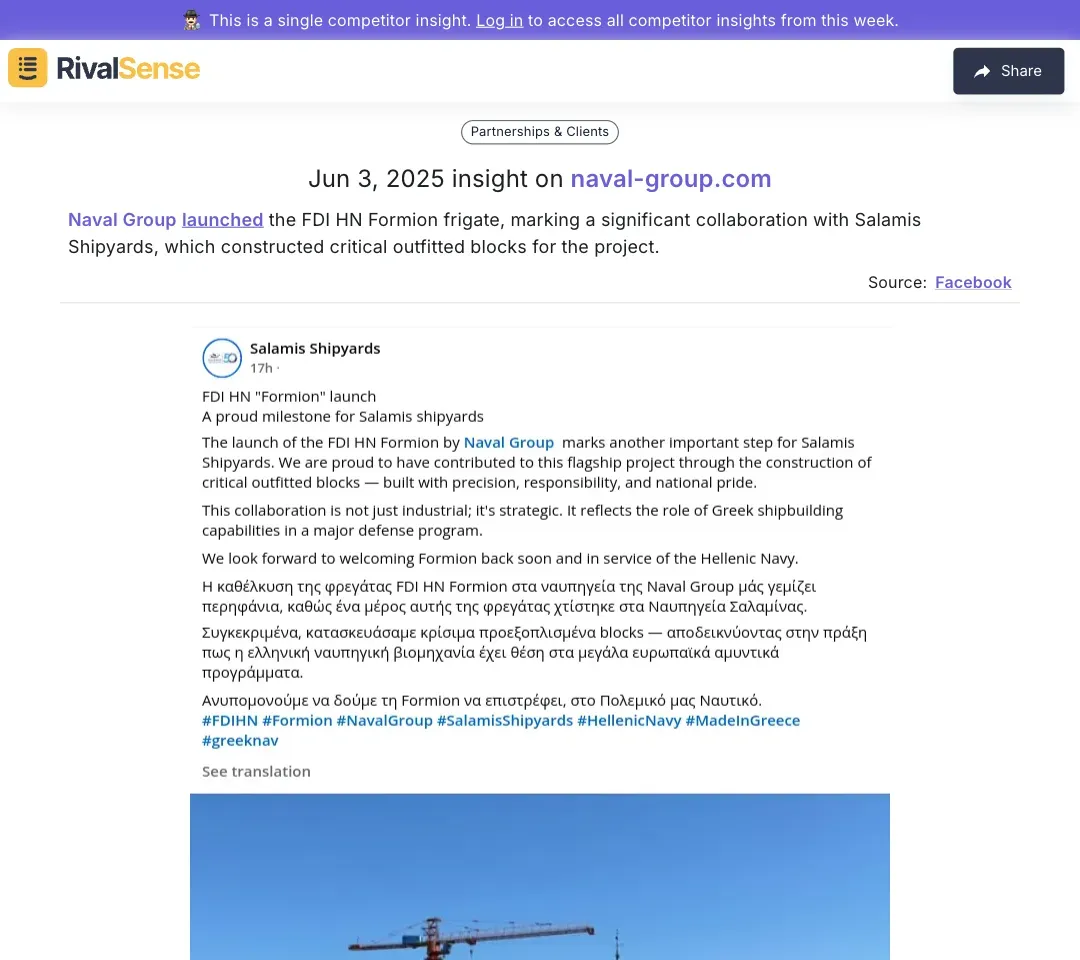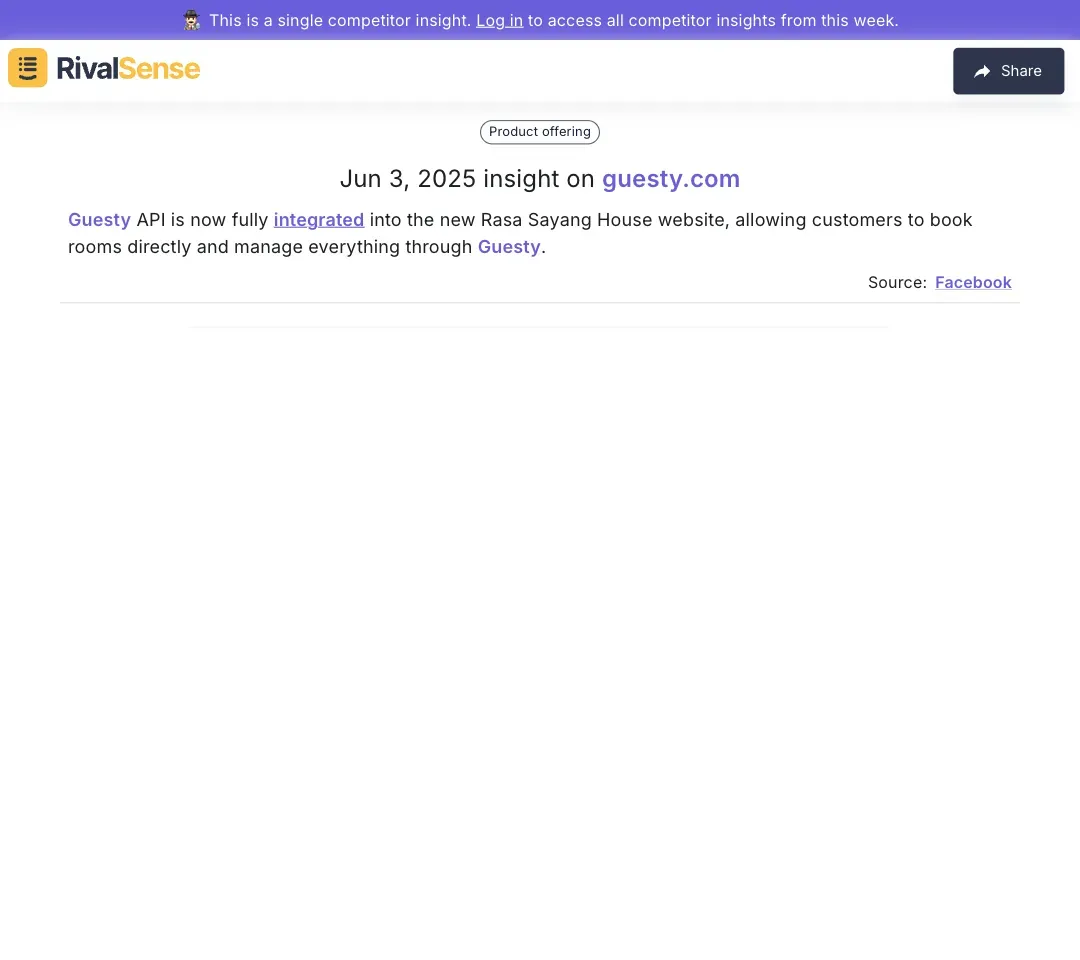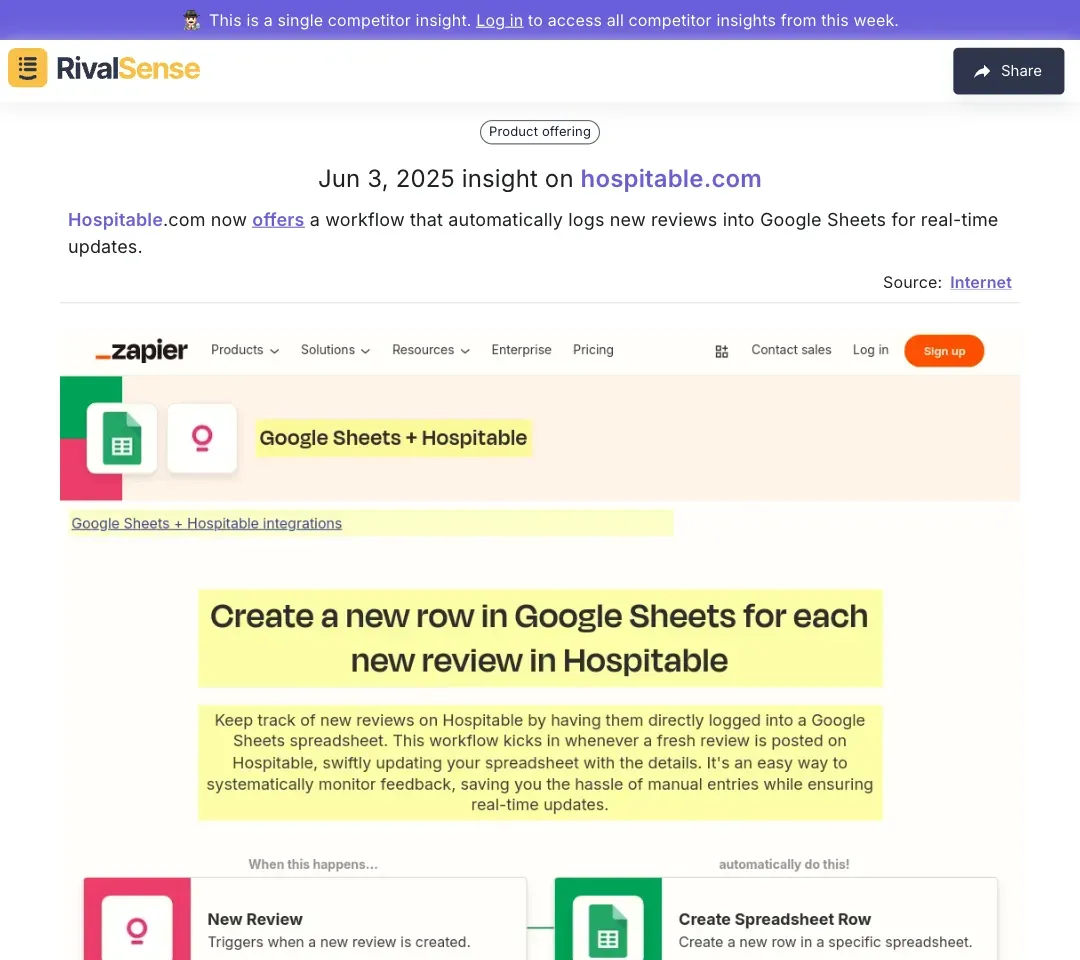Real World Competitor Analysis Walkthrough
In today's fast-paced business environment, staying ahead of your competitors is not just an advantage—it's a necessity. Competitor analysis is a critical component of strategic planning, offering insights that can shape your product development, marketing strategies, and overall business direction. But how do you conduct a comprehensive competitor analysis with real-world impact? This practical walkthrough will guide you through the process step by step.
Understanding Competitor Analysis
Competitor analysis involves systematically identifying your rivals and evaluating their strategies to uncover relative strengths and weaknesses. The goal is to reveal market opportunities and threats before they impact your business. A thorough analysis examines these key dimensions:
- Product Launches/Updates: Spot innovation trends and feature gaps
- Pricing Strategies: Position your offerings competitively
- Event Participation: Discover engagement opportunities
- Partnerships: Identify potential alliance openings
- Regulatory Compliance: Anticipate industry shifts
- Management Changes: Detect strategic pivots
- Media Mentions: Gauge brand perception
The Challenges of Manual Tracking
Manually monitoring competitors consumes valuable resources and often yields incomplete results. Scouring websites, social media, news outlets, and registries can take hours weekly, yet critical updates still slip through. The volume of unstructured data makes pattern recognition nearly impossible without specialized tools.
How RivalSense Streamlines Analysis
RivalSense automates competitor intelligence gathering across 80+ sources. Here's how it transforms the process:
- ✅ Comprehensive Monitoring: Tracks websites, social media, news, and registries
- ✅ Curated Weekly Reports: Delivers digestible email summaries
- ✅ Actionable Insights: Highlights strategic patterns and changes
- ✅ Time Savings: Reduces research from hours to minutes
Step-by-Step Walkthrough
Follow this actionable framework to implement competitor analysis:
Step 1: Identify Key Competitors
List primary and secondary rivals. Consider both direct competitors and disruptive newcomers. RivalSense can suggest relevant competitors based on your industry.
Step 2: Configure Tracking
Input competitor names into your tracking tool. Establish monitoring for all seven analysis dimensions mentioned earlier.
Step 3: Analyze Weekly Intelligence
Review automated reports to spot:
- 🚀 Product launches/upgrades
- 💰 Pricing changes
- 📅 Event participation
- 🤝 New partnerships
- ⚖️ Regulatory updates
- 👔 Leadership changes
- 📰 Media coverage
Step 4: Detect Strategic Patterns
Identify recurring behaviors like seasonal launches or partnership types. For example, noticing competitors consistently attending specific industry events could signal valuable networking opportunities.
Step 5: Implement Strategic Responses
Convert insights into action:
- Match competitor features that resonate with customers
- Adjust pricing based on market positioning
- Pursue partnerships with complementary businesses
Real-World Competitor Insight Examples
Here's how actual intelligence from RivalSense delivers strategic value:
1. Product Launch & Partnership Tracking

Insight: Naval Group launched the FDI HN frigate through collaboration with Salamis Shipyards.
Strategic Value: Reveals supply chain partnerships and expansion strategies in your industry. Helps identify potential alliance opportunities or competitive threats.
2. Product Integration Monitoring

Insight: Guesty API integration enables direct bookings on Rasa Sayang House's website.
Strategic Value: Exposes how competitors enhance user experience through tech partnerships. Inspires feature development priorities for your own platform.
3. Feature Update Alerts

Insight: Hospitable.com automated review logging to Google Sheets.
Strategic Value: Flags emerging workflow automation trends. Enables rapid response to feature innovations that could become industry standards.
Conclusion
Effective competitor analysis requires consistent monitoring across multiple dimensions. Manual approaches often miss critical insights, while automated tools like RivalSense transform raw data into actionable strategy. By implementing this walkthrough, you'll convert competitor intelligence into sustainable advantages.
Ready to upgrade your competitive intelligence?
Try RivalSense for free and get your first competitor report today!
📚 Read more
👉 Decoding WTW's Strategic Shift: From ESG to Sustainability Focus
👉 Decoding Competitor Moves: Guesty's Expansion and Strategic Hiring
👉 Decoding Competitor Moves: How Zip's 2025 Procurement Strategy Can Inform Your AI Readiness
👉 Revolutionize Your Strategy: AI-Powered Competitor Analysis with RivalSense
👉 Competitor Community Building Analysis: Uncover Gaps and Opportunities for Your Business
